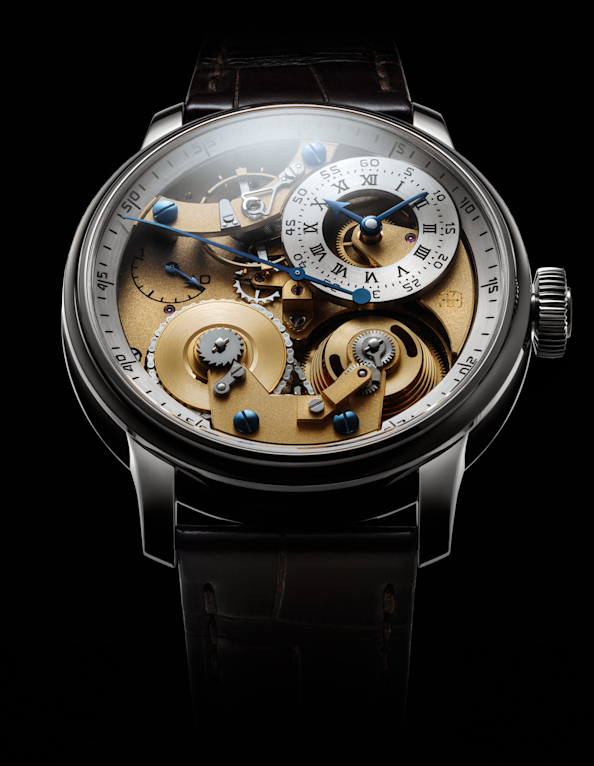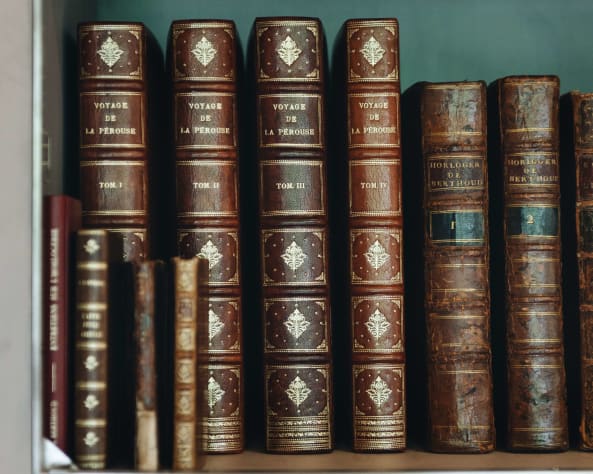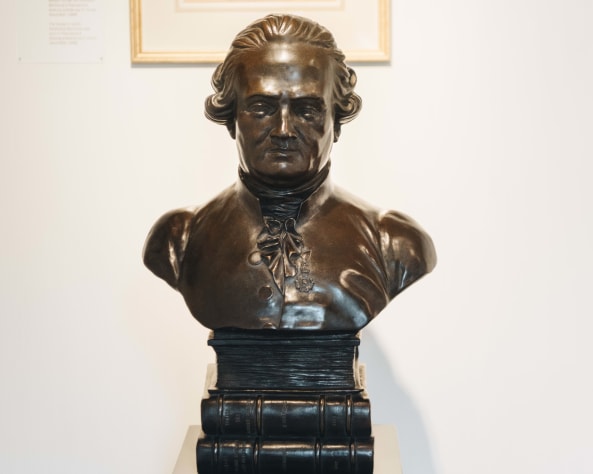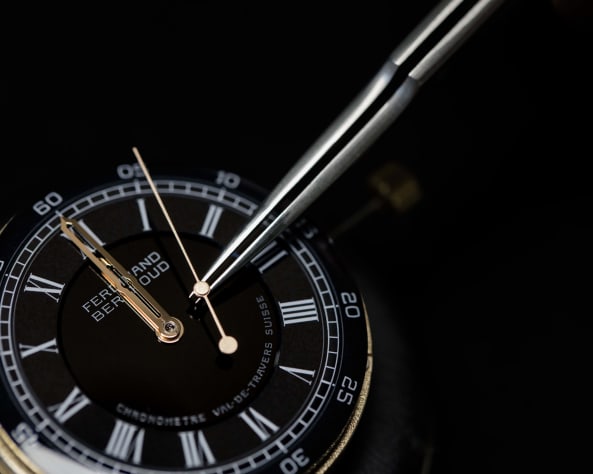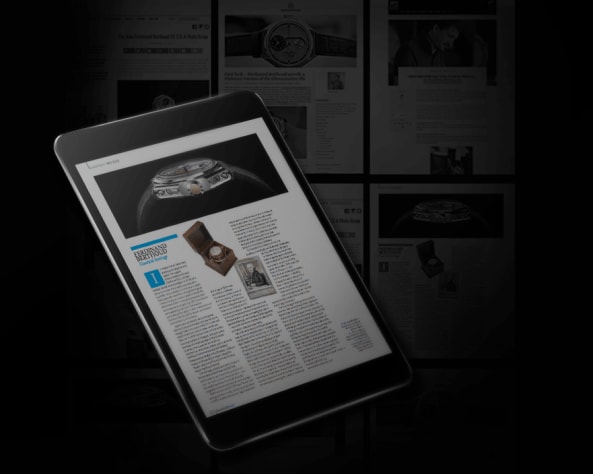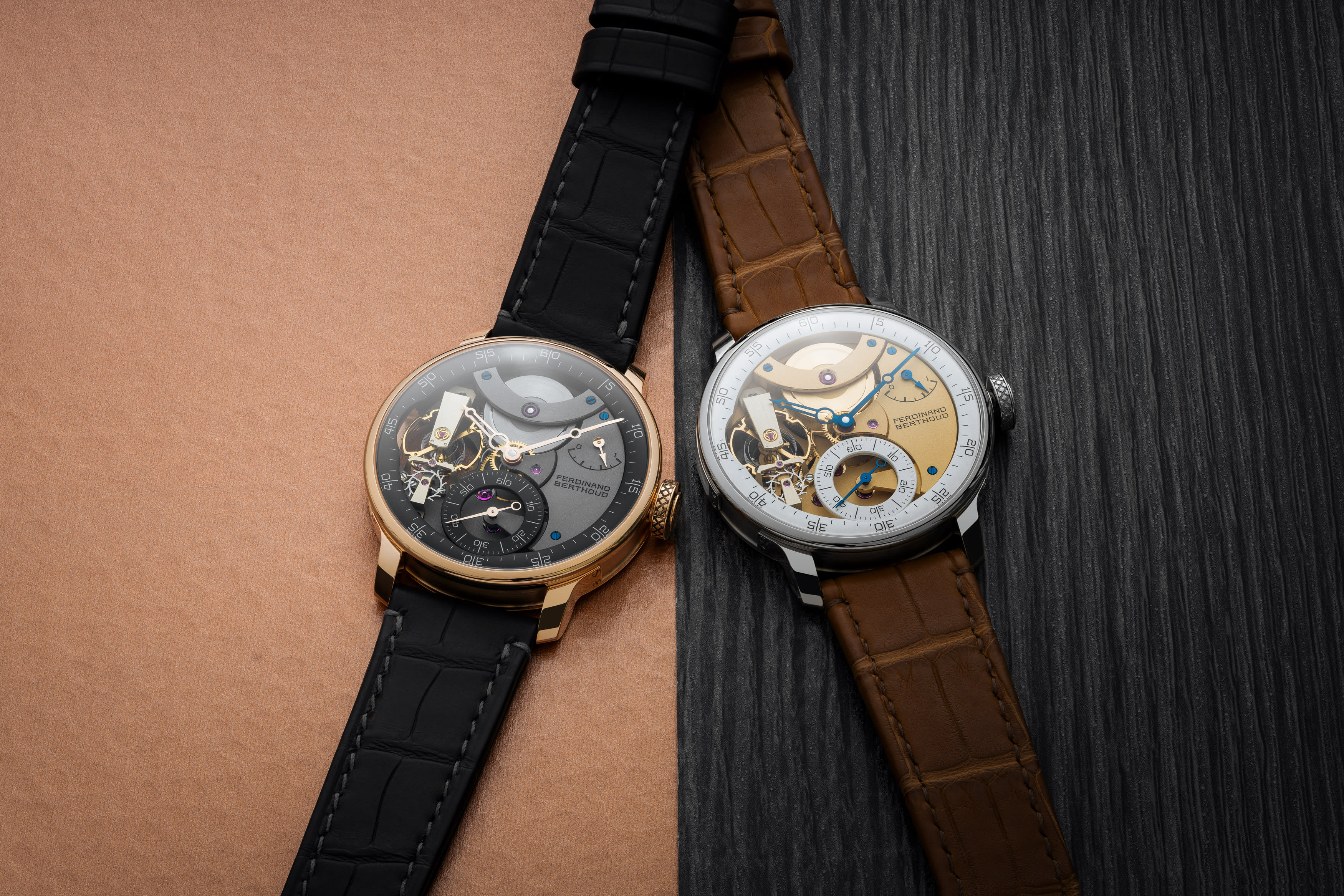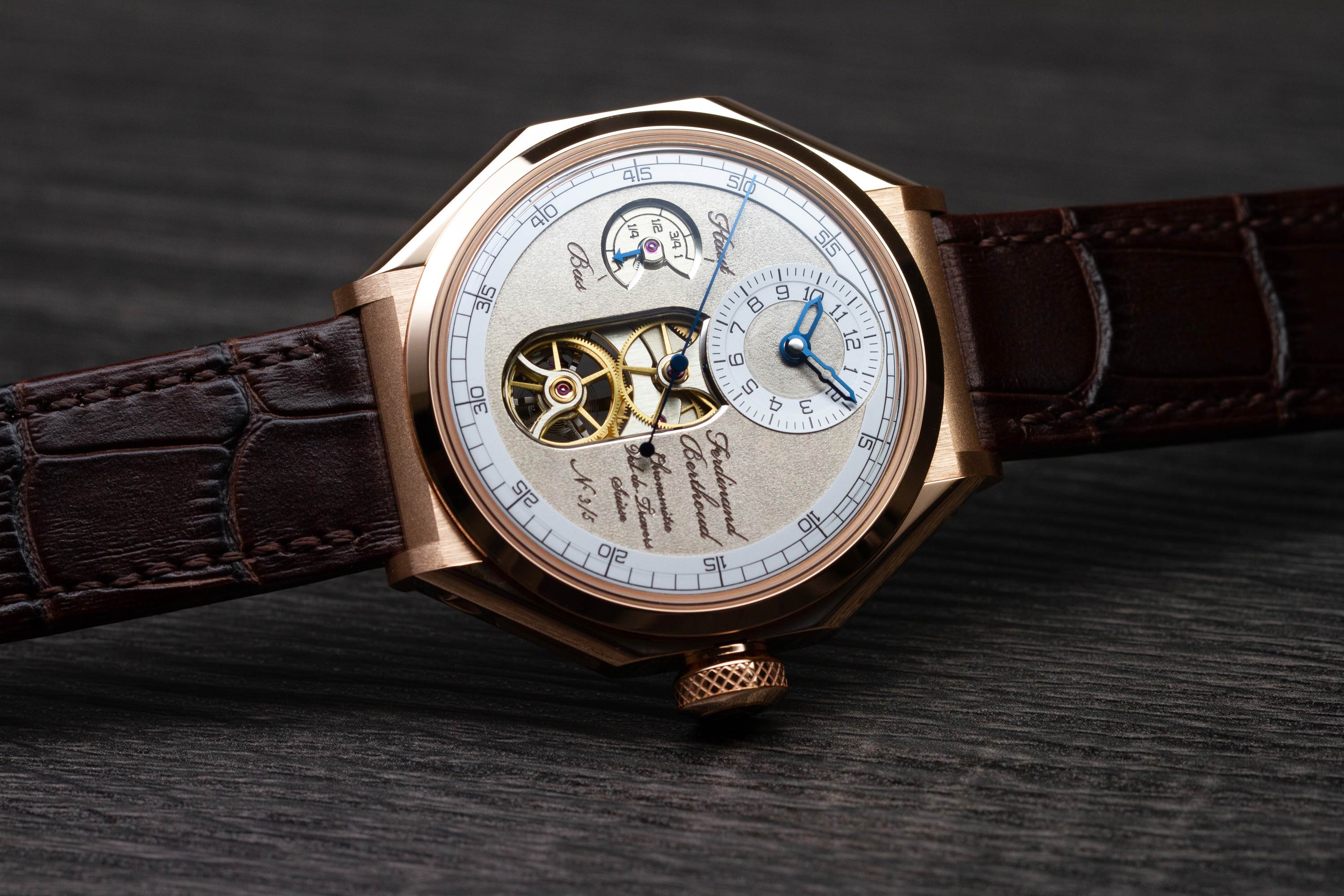
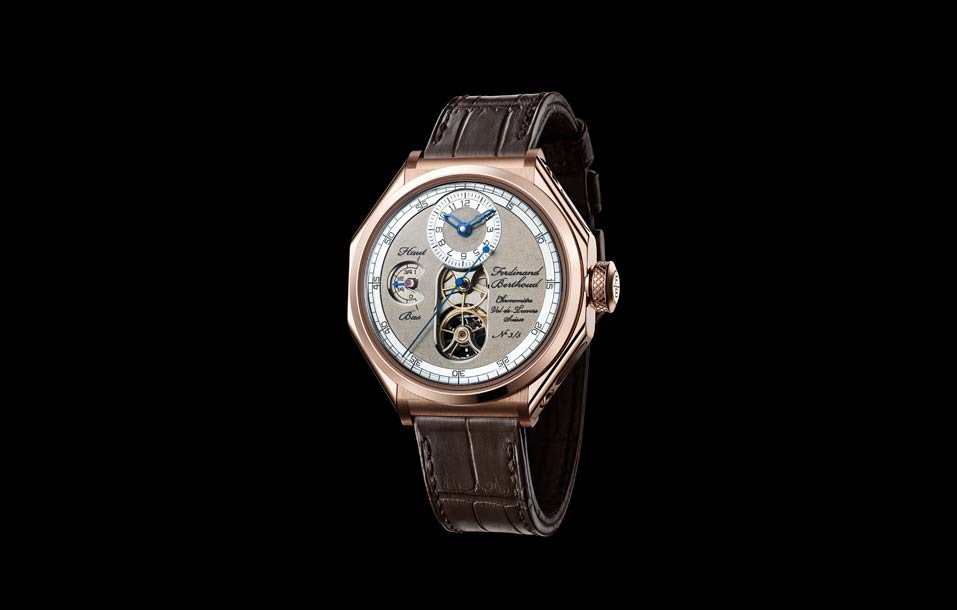

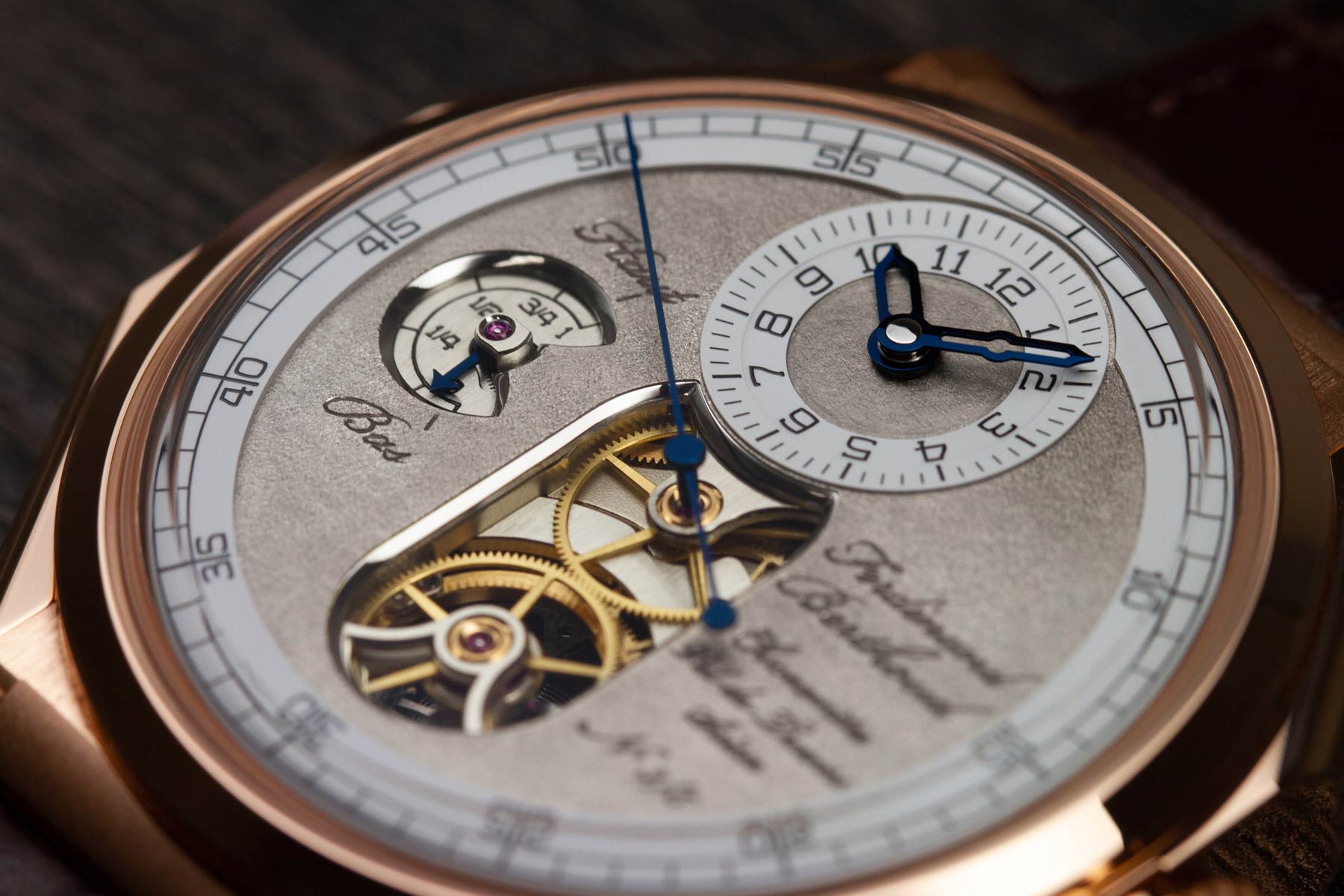
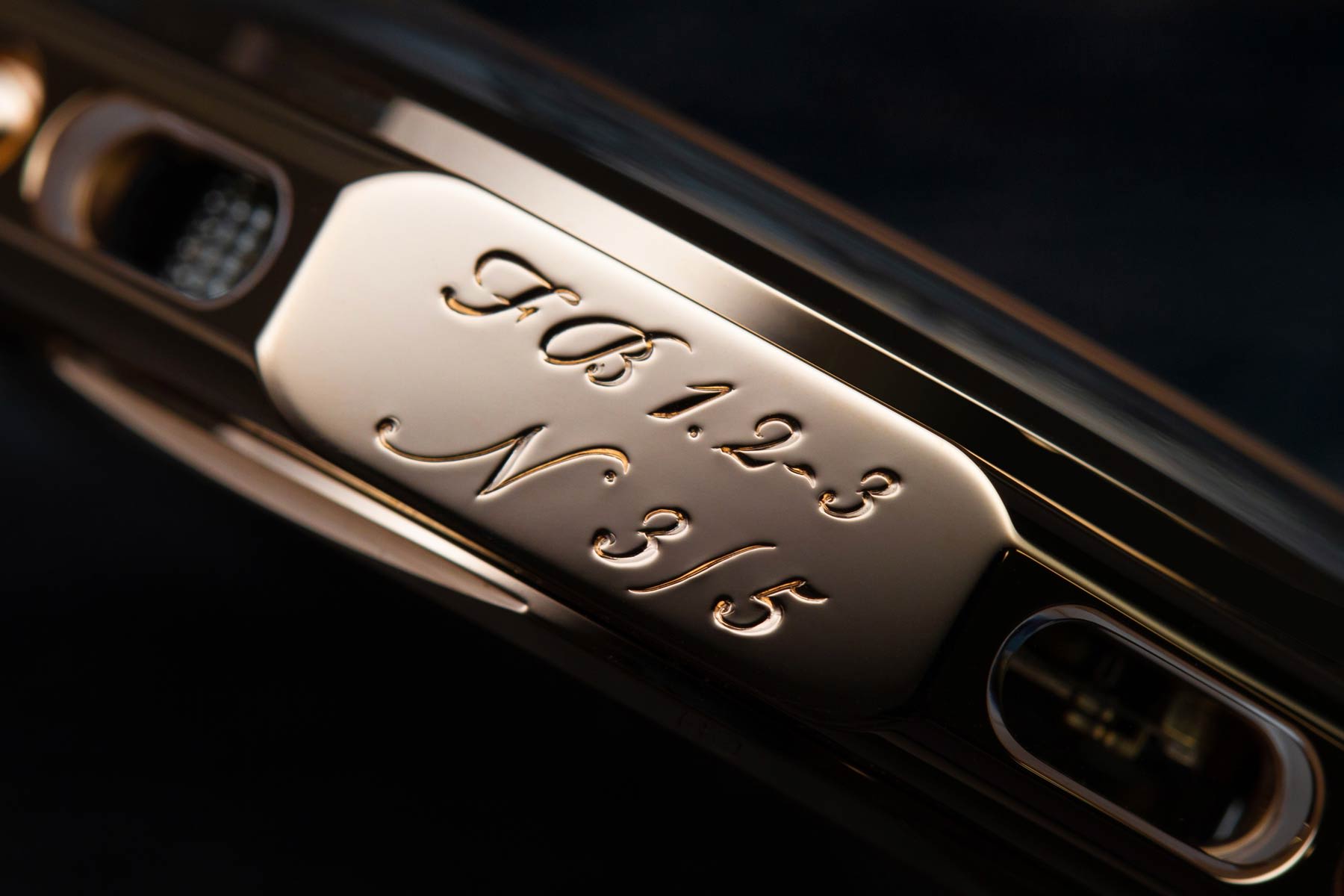
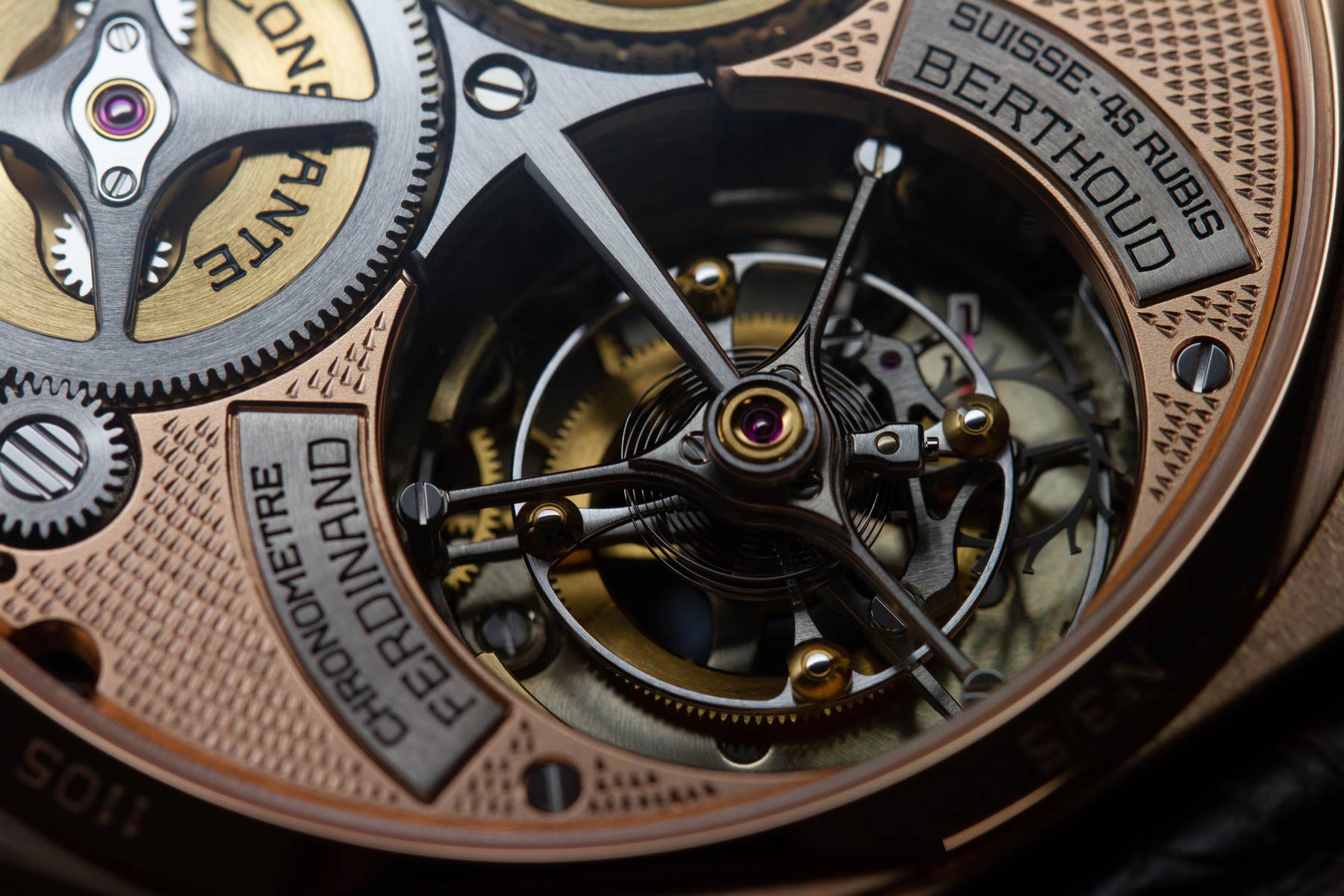
Featuring an entirely hand-patinated white gold dial and a rose gold case, a new model is enriching the FB 1 “Oeuvre d’or” collection, the most artistic interpretation of the chronometre FB 1.
At the 2019 Salon International de la Haute Horlogerie (SIHH), Chronométrie Ferdinand Berthoud presented a new pillar of its FB 1 collection: the Œuvres d’Or. These were two extremely limited five-piece editions, directly inspired by a creation by Ferdinand Berthoud, the Astronomical Pocket Watch No. 3, assembled and adjusted in Paris in 1806.
Today, the Œuvre d'Or collection is enriched by a new limited and numbered edition of five watches (ref. FB 1.2-3), combining a rose gold case with a white gold dial and a movement with three half-bridges in 18-carat rose gold.
The overall appearance of the model remains faithful to its inspiration. These five models are graced with a prestigious hand-crafted finish applied to the dial and movement. The first, which preserves its broad opening, provides a vast field for artistic expression in entirely hand-patinated 18-carat white gold. This patina is achieved by means of a line-engraving technique that requires great manual dexterity. First of all, the gold is finely grained with a burin. The surface is then crafted at length using a tool called a "rocker”, enabling the light to glide across the dial to the rhythm of the shimmering moiré effect thus created. A symbol of the passing of time and of Ferdinand Berthoud's legacy, this combination of artistic techniques recalls the natural patina of the dial of the astronomical pocket watch No. 3 that inspired the Chronomètre FB 1.
The dial is then hand-engraved with descriptive indications regarding the model, in keeping with 18th and 19th century traditions: "Ferdinand Berthoud - Chronomètre - Val-de-Travers - Suisse", followed by the individual number of the watch "N° X / 5". Opposite these inscriptions is the one indicating the movement’s power reserve.
On the case-back side, this collection picks up the "pyramid" motif across the entire surface of its three 18-carat gold half-bridges. This true feat of craftsmanship demonstrates the expertise of the Manufacture’s engravers: the material is incised freehand using a burin wielded with great precision and strict regularity. This pattern first introduced in 2018 is inspired by the base of a clock by Ferdinand Berthoud, kept at the L.U.CEUM in Fleurier.
On the movement side, Chronométrie Ferdinand Berthoud has chosen to use its original calibre, chronometer-certified by the COSC. Framed by the emblematic octagonal case with its bevelled edges is the unique pillar-type architecture. This technique of securing bridges to the mainplate lightens the structure of the movement and also provides an integral view of its components and their exceptional hand-crafted finishes.
This 100% in-house movement retains its three essential features. First of all, a suspended fusee-and-chain transmission system. The latter serves to deliver constant force to the escapement, a guarantee of isochronism throughout the running time of the movement, from the first turn of the crown through to complete winding and thus ensuring a total 53-hour power reserve. This construction also helps reduce the thickness of the movement to 7.96 mm, making it one of the thinnest in its class.
Next is the tourbillon with direct-drive seconds in the centre. The tourbillon itself makes it possible to compensate for the variations in rate induced by the different positions to which a wristwatch will be subjected in the course of a day. The direct-drive seconds display is made possible by the correlation between the fourth wheel and the wheel driving the tourbillon carriage, both perfectly identical and visible on the dial side, enabling the seconds to be displayed without any jerking.
Finally, the FB-T.FC-3 calibre is equipped with a power-reserve indicator operating in an atypical manner. It rests on a mobile cone which, in association with the rotation of the cylinder, moves up and down according to the state of wind. A jewel-tipped mobile arm (feeler spindle) takes an extremely accurate measurement, which it then transmits to a hand visible on the dial side.
Four patents have been filed for the unique features of the Ferdinand Berthoud movement.
